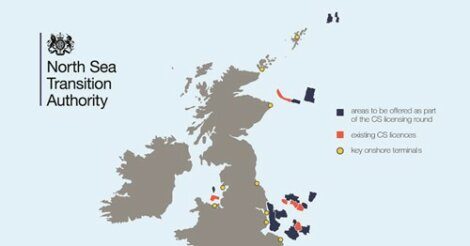Energy / Bids invited for two carbon storage areas off Shetland
The licensing round has been hailed as a ‘very positive step’ for the ORION clean energy project
THE UK’s first licensing round for carbon storage sites includes two areas to the north east of Shetland.
Carbon capture and storage involves taking CO2 emissions from industrial processes, transporting it via a ship or pipeline and storing it underground offshore, and it is seen as a component of the drive to net zero.
The two sites earmarked off Shetland are understood to be already connected to Sullom Voe Terminal by pipeline as they are associated with the Ninian oil field.
Shetland Islands Council’s future energy manager Douglas Irvine said the licensing round was a “very positive step” for the ORION project, which aims to make Shetland a clean energy hub.
He also said it “broadens the prospects” for the future of Sullom Voe Terminal, which is on course to diversify in the energy transition.
Terminal operator EnQuest previously said it is is continuing to develop “cost-effective and efficient plans to transform” Sullom Voe Terminal and is preparing to repurpose the site to “progress global scale decarbonisation opportunities”.
It had said this includes carbon capture and storage, electrification and green hydrogen.
In a statement issued this week, a spokesperson for EnQuest told Shetland News: “Facilitating carbon capture and storage through the Sullom Voe Terminal is one decarbonisation opportunity EnQuest is reviewing as part of its vision to create a renewable energy and decarbonisation hub at the site which offers significant infrastructure repurposing potential.
“EnQuest believes that carbon capture and storage will play a key role in reaching net zero targets and welcome the launch of the UK’s first-ever carbon storage licensing round and the inclusion of areas in the Northern North Sea accessible from the Sullom Voe Terminal site in the licensing round..”
The carbon storage licensing round is being overseen by the UK Government’s North Sea Transition Authority.
Become a member of Shetland News
It includes 13 areas, and these come on top of six licences which have previously been issued.
The authority says they could “have the ability to make a significant contribution towards the aim of storing 20-30 million tonnes of carbon dioxide by 2030”.
This round is envisaged to be the first of many as it is estimated that as many as 100 stores could be required in order to meet the UK’s net zero by 2050 target.
It is expected that any new licences will be awarded in early 2023. The size and scale of the licensed stores mean that they are likely to proceed at different paces, but first injection of CO2 could come as early as four to six years after the licence award.
Irvine – who is involved in the ORION project – said carbon capture and storage was “probably the best way” to reduce emissions in the energy transition as it directly removes carbon.
“We won’t achieve our 2050 targets unless we find ways to take the carbon out some of the industrial processes, and the find a way to transport it and store it,” he said.
Energy and climate change minister Greg Hands said: “We’re determined to make the UK a world leader in carbon capture, which will be crucial in helping us reduce emissions and protect the viability and competitiveness of British industry.
“This licensing round is an important step in making this a reality, helping support new jobs across the UK and encouraging investment in our industrial heartlands.”
Become a member of Shetland News
Shetland News is asking its many readers to consider paying for membership to get additional features and services: -
- Remove non-local ads;
- Bookmark posts to read later;
- Exclusive curated weekly newsletter;
- Hide membership messages;
- Comments open for discussion.
If you appreciate what we do and feel strongly about impartial local journalism, then please become a member of Shetland News by either making a single payment, or setting up a monthly, quarterly or yearly subscription.













































































